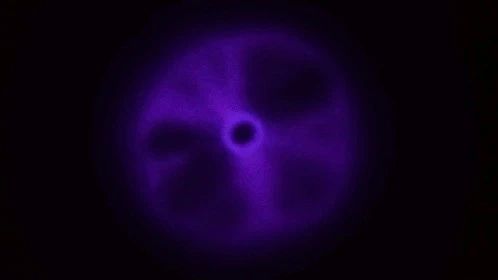
Just spray the water into the glass and you can see the glow! Of course, the current can only be done if it is not a normal high speed.
spray the can at the glass and you won't expect anything special in the process. Under extreme conditions, however, something unusual does happen when a stream of water hits a solid surface: it glows.
in a paper last year, researchers reported this phenomenon for the first time. In their initial version, the surfaces hit by hypervelocity water were single crystal quartz and single crystal lithium niobate. It sounds like a material-demanding experiment, but after that, tubing video blogger Applied Science did some tests, and this time he found that everyday materials such as quartz glass, ordinary glass (slides) and polycarbonate can also glow (at least until they are washed out by a high-pressure water column).
(this light spot is caused by the impact of a high-pressure water column on the glass, so you can't see the ring structure clearly without magnifying it with a microscope)
so, how did this light come from? To be sure, the luminescence comes from the ionization and excitation of local gas molecules. If the experimental air environment is replaced with helium, the annular light will also become a color consistent with the characteristics of helium, thus proving that the luminescence does come from gas molecules.
Is it exciting and surprising to find a beautiful prom / dance lavender dresses for your event? Let them endow you with a demonstration of refined taste.
① past experiments show that when the interface such as quartz and glass is in contact with water, there will be such a law of charge distribution locally: the surface of the solid tends to be negatively charged and the water in contact with it tends to be positively charged.
② when the water hits the solid surface at a very high speed, the impact of the local liquid will have very severe friction (or shear in hydrodynamics terms). This process will produce quite a lot of free electrons and make the nearby water surface also negatively charged. The result of
③ is that the water surface near the impact accumulates a negative charge, while the water film extending to both sides at a distance is positively charged. These two positions can be regarded as positive and negative poles. when the electric charge accumulates to a certain extent, the air between the two poles is ionized, and the charged particles strike and excite the gas molecules, resulting in luminescence.
the schematic diagram is as follows:
this feeling is very strong, although the conditions are too extreme to try. Please also do not forget that the impact of this high-pressure water column is not ordinary, cutting hands is a matter of minutes, if you have the opportunity to contact, you must be careful.
original thesis: original video of http://www.pnas.org/content/114/48/12657/tab-figures-data
Applied Science: https://www.youtube.com/watch?v=_vTq8oGpqwM